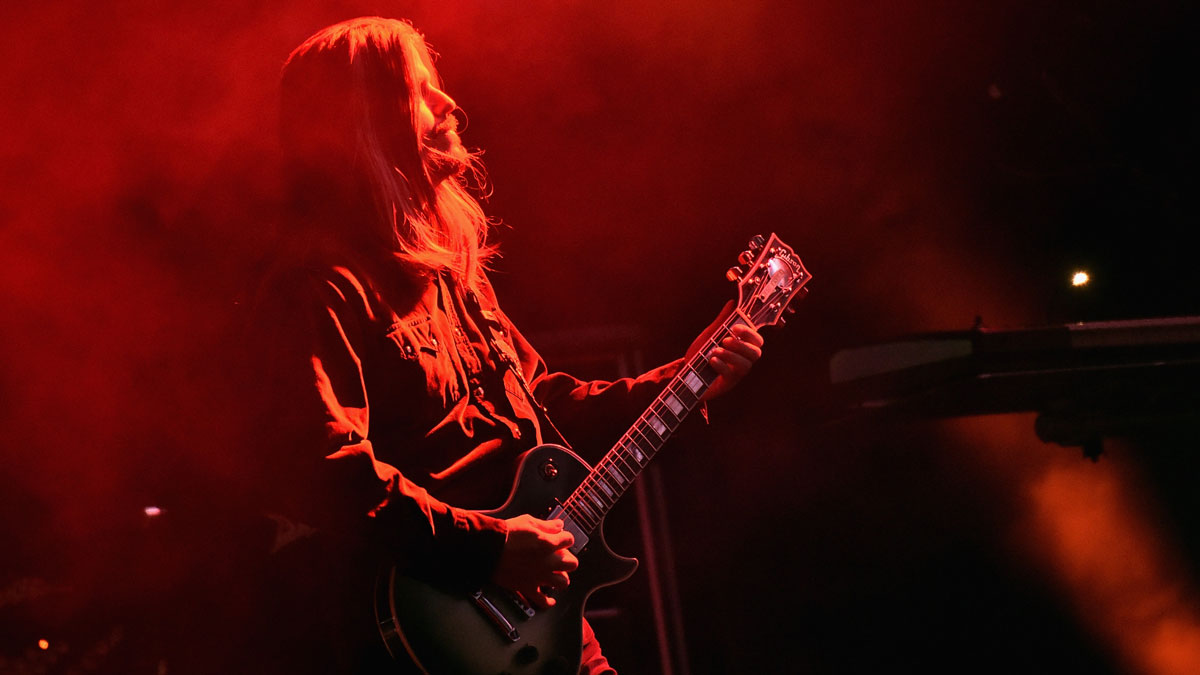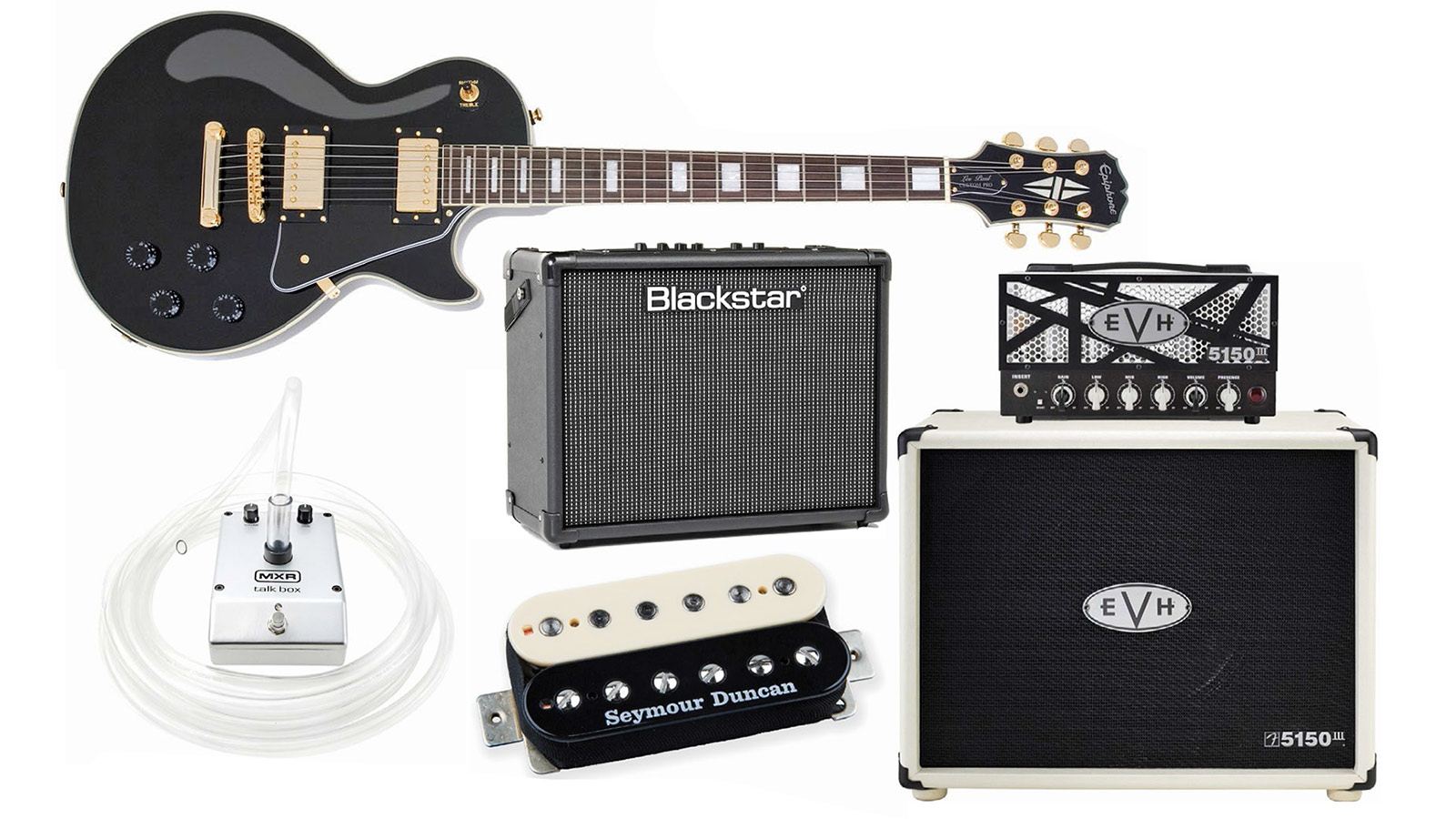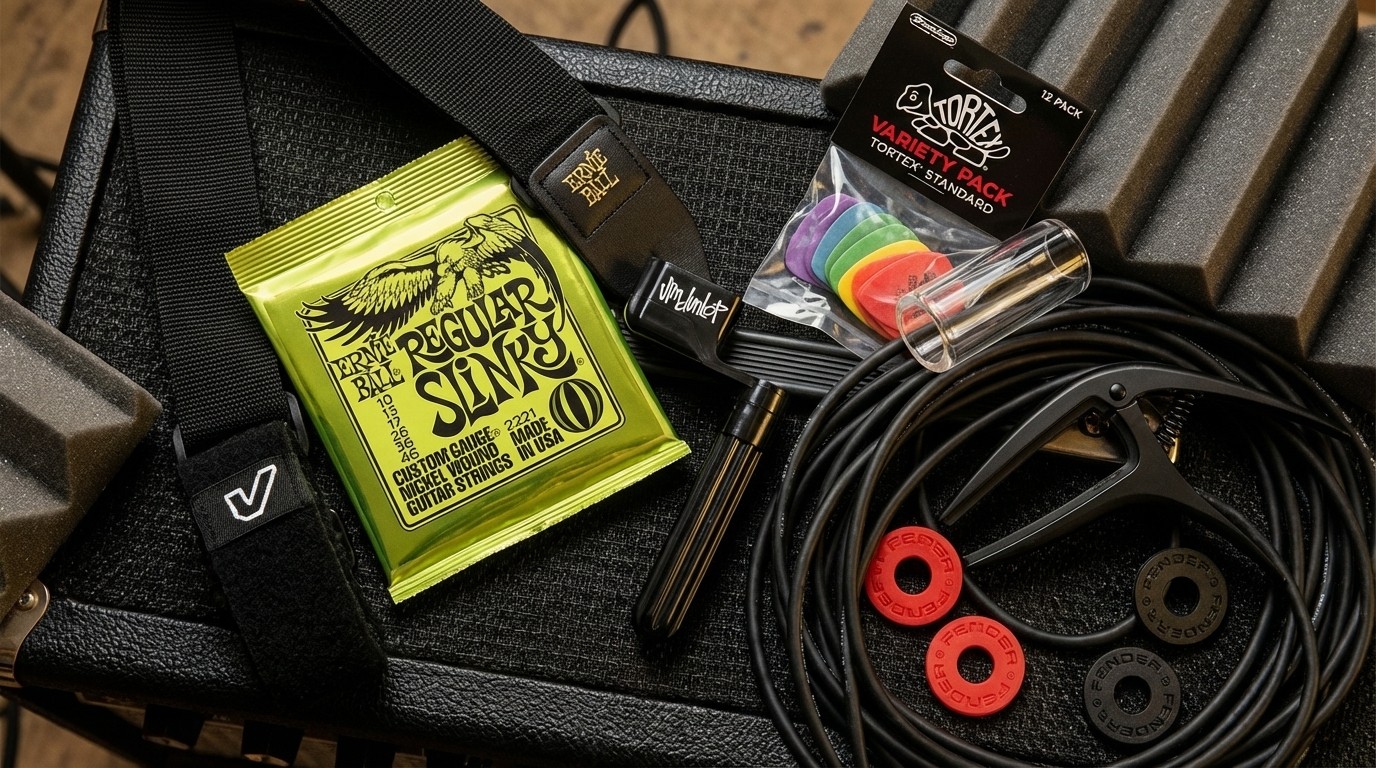The secrets behind Adam Jones' guitar tone on Tool's Jambi
Learn how Adam Jones got his remarkable tone on a Tool classic

Many classic electric guitar tones were recorded using a 'less is more' approach that this column has frequently described. However, for many modern productions today the credo just as often is 'too much ain’t enough.' The latter was certainly the case when Tool guitarist Adam Jones recorded his tracks for his band’s 2006 album, 10,000 Days.
Jones brought several key elements of his guitar rig into the studio when the sessions started, including his trademark 1978 Gibson Les Paul Custom with its rare silverburst finish, 1976 Marshall Model 1992 JMP Super Bass 100-watt head and 'blue face' Diezel VH4 head.
This rig was the core of Jones’ sound on previous Tool albums and also played a similar role here, but engineer Joe Barresi, who himself is a guitarist and devoted gear collector, dramatically augmented Jones’ usual studio setup with a wide variety of amps that he owns, including a Bogner Uberschall and Rivera KR7 Knucklehead Reverb.
Most of Jones’ guitar tracks for 10,000 Days were recorded with him playing through three or more amps simultaneously
Most of Jones’ guitar tracks for 10,000 Days were recorded with him playing through three or more amps simultaneously. Each amp head was paired with a separate 4x12 cabinet, and three different mics - always a Shure SM57 and Sennheiser 421, plus a third mic that varied depending on what Barresi thought was needed — were used on each cabinet.
The three different mic signals from each amp were blended and recorded onto a single track, but each amp had its own track to allow Barresi to make necessary adjustments during the mixdown process.
Blending separate layers of power amp and preamp distortion and keeping the track bone dry (the only effect is a Heil Talk Box used for an instrumental interlude just past the halfway point) provides a potent combination of crisp attack, aggressive crunch and powerful but focused punch.
Complex layering of guitar tracks like this can result in incomprehensible mush in the wrong hands, but Jones and Barresi tweaked each amp’s EQ and gain to its individual strengths, balancing each element accordingy.
All the latest guitar news, interviews, lessons, reviews, deals and more, direct to your inbox!
As a result, the record’s compiled tone sounds much more harmonically rich, detailed and massive - particularly in the midrange - than any single amp could ever sound.
Get the sound, cheap!
- Epiphone Les Paul Custom Pro
- Seymour Duncan SH4 JB
- EVH 5150 III LBX head with EVH 5150 III 1x12 cabinet
- Blackstar ID:Core 40 V2
- MXR M222 Talk Box

Tone tip: A minimum of two amps - one with focused midrange and sizzling treble and the other dialed in to tight bass thump - are needed to get an ideal blend, but three amps are even better with each handling bass, mids and treble separately.
Original gear
Guitar: 1978 Gibson Les Paul Custom with Seymour Duncan SH4 JB (bridge pickup only); volume: 10, tone: 10
Amp: 1976 Marshall Model 1992 JMP Super Bass 100-watt head (Presence: 4.5, Bass: 0, Middle: 10, Treble: 3, Volume I: 4, Volume II: 5.5, Input I top left, jumper between input I bottom left and input II top right) into Marshall 4x12 with Celestion G12M Greenback speakers; c. 1994-97 Diezel VH4 blue (Channel 3, Bass: 8, Middle: 10, Treble: 8.5, Volume: 5.5, Gain: 4.5) into Mesa 4x12 with Celestion G12 Vintage 30 speakers; Rivera KR7 Knucklehead Reverb Mick Thomson Signature (Channel 3, Presence: 6, Focus: 7, Sub Cut: 5/High Pass On, Reverb: 0, Master 3: 7, Treble: 7, Middle: 8/Scoop Off, Bass: 6, Gain:7.5, High Gain input) into Rivera 4x12 with Celestion G12T-75 speakers
Effects: Heil Talk Box
Strings/tuning: Ernie Ball Skinny Top/Heavy Bottom .010-.052/D, A, D, G, B, E
Pick: Dunlop USA Nylon .88
Chris is the co-author of Eruption - Conversations with Eddie Van Halen. He is a 40-year music industry veteran who started at Boardwalk Entertainment (Joan Jett, Night Ranger) and Roland US before becoming a guitar journalist in 1991. He has interviewed more than 600 artists, written more than 1,400 product reviews and contributed to Jeff Beck’s Beck 01: Hot Rods and Rock & Roll and Eric Clapton’s Six String Stories.

